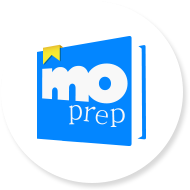Schools Reopening: What Has Been Lost and How to Move Forward
For more than a year, education has been thrown into disarray for students across the country. With the effects of COVID-19 seeping into the 2020-21 school year, families have started to see the results of long-term online learning in grades, performance, and overall motivation. In the San Diego Unified School District, the board estimated that 5-10% of their students are failing every single one of their classes. It has come as no surprise that many students have fallen behind, given that many schools were forced to condense or completely cut out parts of the curriculum for classes to accommodate for this new learning structure.
It’s not only students’ grades that are of concern. Some parents are seeing the exact opposite issue, with their children earning a flow of A’s on assignments but barely understanding the material. This grade inflation may be due to the changes in curriculum to accommodate for online learning, with high-achieving students spending so much time in review that they continue to earn high grades but do not continue to increase their knowledge of the subject.
Learning loss is expected over the summer, when students regress slightly in knowledge due to lack of practice, and is typically mediated with quick review at the beginning of their next course. However, as students ended the 2019-20 school year online and likely with already a cut curriculum, the learning loss this past summer was much greater than seen in a normal school year. Teachers had to spend more time reviewing the foundational content that students may have been able to retain if not for the chaos of the previous school year combined with an immediate 2-month break from learning.
What is learning loss?
Learning loss is the difference between the level of knowledge a student is expected to retain in a given year versus the level of knowledge a student actually retained that year.
When there are large events - like a pandemic - that we expect to affect students’ education, measured learning loss gaps can point to where intervention may be necessary. After the move to online learning in the spring, students were already performing at levels lower than expected in Math and Reading. This was prior to both “natural” summer learning loss and, for many students, continued remote learning in the fall of 2020.
In a more recent study by Pace, California’s students are not being affected equally throughout grade levels. Learning loss was found to be more severe in Math and ELA in grades 9 and under, while older high school students saw a widened gap between students already ahead who were able to get even further ahead with self-taught learning and the students who fell behind without the structure and resources of in-person learning.
How can we accommodate for learning loss?
Many school districts have been trying to answer that exact question. California alone has authorized 5 billion dollars, in addition to the CARES funding many schools received this fall and spring, allocated specifically to mitigate lost learning in local schools. If this funding is spent similarly to the CARES funding, many schools may implement small group or one-on-one tutoring with students currently struggling.
In March of 2021, an additional study was released that focused on high-dosage (one-on-one) tutoring as an educational intervention for Math loss, which found that students continued to see persistent gains in Math test scores and GPA for as long as two years following tutoring. What was lost during online learning - side discussion about the class with peers, quick questions between classes to teachers, physical materials, a break from screen time - they can achieve through one-on-one tutoring.
The issue with addressing learning loss through class time is the same issue that teachers had at the beginning of this school year: there is no reasonable way to accommodate for the students who need to go through material more slowly while still being able to serve the students who want to get ahead. Without individualized attention, neither of these students are able to make the progress they’re capable of because the former will fall behind and the latter will get bored of review and tune out.
Regardless of which category your child falls under, the time to start addressing learning loss is as soon as you recognize it. Because the skills younger students are learning now are foundational, it will be nearly impossible to progress in a subject that builds upon itself like Math without first devoting effort to determining and then filling in their content gaps.

